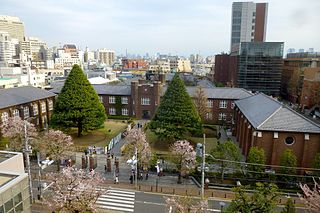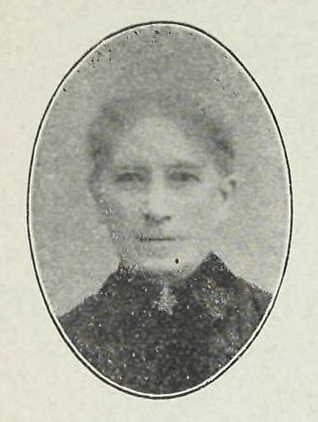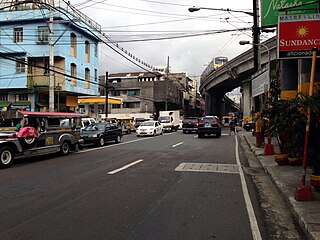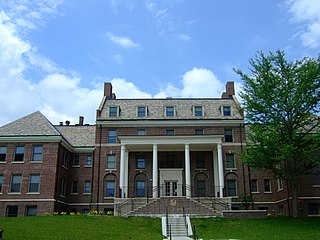Related Research Articles
Wesleyan University-Philippines (WU-P) is a private, sectarian, and non-profit higher education institution run by the United Methodist Church (UMC) in Cabanatuan, Nueva Ecija, Philippines. It was founded in 1946 as the Philippine Wesleyan College. It is named after John Wesley, the founder of Methodism. The university offers preschool, grade school, high school undergraduate, and graduate programs. It also initiated the Support for the Handicapped and their Rehabilitation through Education (SHARE) Program, the first school in Central Luzon to integrate hearing-impaired students into mainstream classes.

Rikkyo University, also known as Saint Paul's University, is a private university, in Ikebukuro, Tokyo, Japan.

Felix Ysagun Manalo , also known as Ka Felix, was the leader and the first Executive Minister of Iglesia ni Cristo. Followers see Manalo as the Messenger of God in these last days. He is the father of Eraño G. Manalo, who succeeded him as Executive Minister of the INC, and the grandfather of Eduardo V. Manalo, the current Executive Minister of Iglesia ni Cristo.

James Whitford Bashford was a bishop of the Methodist Episcopal Church in the United States and the first bishop of the Methodist Episcopal Church in China.

Legarda station is an elevated Manila Light Rail Transit (LRT) station situated on Line 2. The station is located in Sampaloc in Manila and is named after Legarda Street, where the station sits above it. The street in turn is named after Benito Legarda, a Filipino legislator.

The University Belt is the name of a de facto subdistrict in Manila, Philippines. It refers to the area where there is a high concentration of colleges and universities in the city. The districts of Quiapo, Sampaloc, and San Miguel are traditionally considered to be the University Belt, although other clusters of schools that lie along the southern bank of the Pasig River, mostly at the districts of Intramuros and Ermita, as well as the southernmost part of Malate near the city limits are also sometimes included. Each of the colleges and universities found in the district are a short walking distance of each other.

The United Church of Christ in the Philippines is a Christian denomination in the Philippines. Established in its present form in Malate, Manila, it resulted from the merger of the Evangelical Church of the Philippines, the Philippine Methodist Church, the Disciples of Christ, the United Evangelical Church and several independent congregations.

Sue Bennett College was a private college in London, Kentucky which operated from 1897 through 1997. It was affiliated originally with the Methodist Episcopal Church, South and later the United Methodist Church. It began as an elementary school and ended its days as a four-year college.

Methodist Church in India is a Protestant Christian denomination of India.

Mary Fletcher Benton Scranton was an American Methodist Episcopal Church missionary. She was the first Woman's Foreign Missionary Society of the Methodist Episcopal Church representative to Korea and the founder of the Ewha Girls School under Emperor Gojong. Today, the Ewha Girls School is the Ewha Womans University, one of the most prestigious women's schools in Asia. Scranton also founded the Tal Syeng Day School for Women in Seoul and the Training School for Bible Women.

Legarda Street is a short street located in Sampaloc district in Manila, Philippines. It crosses through the eastern section of the University Belt area in a generally east–west orientation between the Nagtahan Interchange and the intersection with Nepomuceno Street in Quiapo. It is served by Legarda station of LRT Line 2.

Scarritt College for Christian Workers was a college associated with the United Methodist Church in Nashville, Tennessee, USA. The campus is now home to Scarritt Bennett Center.

Woman's Foreign Missionary Society of the Methodist Episcopal Church was one of three Methodist organizations in the United States focused on women's foreign missionary services, the others being the WFMS of the Free Methodist Church of North America and the WFMS of the Methodist Protestant Church.

The Methodist Deaconess Institute—Esther Hall, also known as Hawthorn Hill Apartments, is a historic building located in Des Moines, Iowa, United States. This building has been known by a variety of titles. They include the Bible Training School, Women's Foreign Missionary Society; Women's Home Missionary Society-Bible Training School; Iowa National Bible Training School; Iowa National Esther Hall & Bidwell Deaconess Home; Hawthorn Hill; and Chestnut Hill. The Women's Home Missionary Society of the Methodist Episcopal Church established a Des Moines affiliate in 1896. Part of their responsibilities was to oversee the work of deaconesses of the church. At about the same time a Bible training school was established at Iowa Methodist Hospital's School of Nursing.

Euphemia Wilson Pitblado was a Scottish-born American women's activist, social reformer, and writer. She traveled in Europe, Canada, and in the United States, crossing the Atlantic five times. Pitblado was a delegate to the National Woman Suffrage Association Convention in Washington, D.C., the New England Woman's Suffrage Association Conventions, the National Woman's Christian Temperance Union (WCTU) Conventions in New York City, Denver, and Chicago, and to the annual Woman's Foreign Missionary Conventions in Boston and Lowell, Massachusetts. Her principal literary works were addresses upon temperance, suffrage, missions, education, and religion.

Belle Harris Bennett led the struggle for and won laity rights for women in the Methodist Episcopal Church, South. She was the founding president of the Woman's Missionary Council of the Southern Methodist Church. Much of her work including fundraising and organizational efforts to provide higher education for a new professional class of social workers and community organizers in the Southern Methodist Church in the U.S. and abroad. Her carefully collaborative support for African Americans and immigrants was considered radical at that time by Southerners. She was a suffragist and supporter of temperance as well.
Elizabeth Russell was an American missionary and educator. She founded Kwassui Gakuin, a school for girls and women in Nagasaki. She was sent by the Woman's Foreign Missionary Society of the Methodist Episcopal Church to Japan in 1879 at the age of forty-three. She contributed to the women's education, social welfare and missionary during her forty years in Japan, and was decorated by the Emperor of Japan in 1919.
The history of Methodism in Sichuan began in the late 19th century when missionaries began to arrive from the United States. Methodists founded or helped found several colleges, schools, and hospitals to aid in modernization and conversion efforts. Later, American Methodists were joined by missionaries from Canada. Methodism grew to become one of the two largest denominations of Protestant Christianity in the province by 1922, along with Anglicanism.
Bertha Fowler was an American educator, as well as a Methodist Episcopal Church preacher and deaconess. In 1901, she established the Woman's Home Missionary Society of the Methodist Episcopal Church, which united with the Woman's Foreign Missionary Society of the Methodist Episcopal Church in 1908.
References
- 1 2 "History". Archived from the original on 2014-11-10.